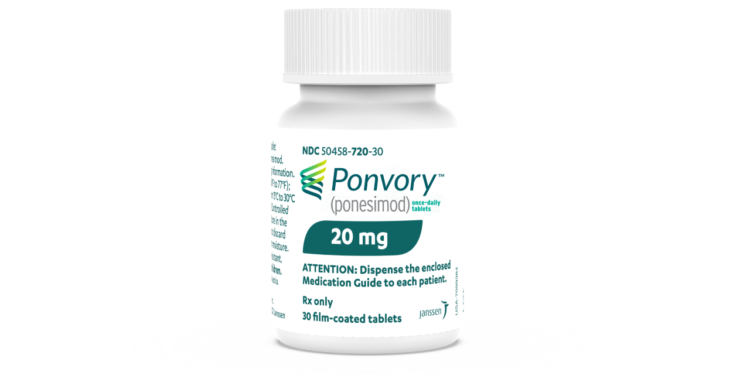PONVORY TM (ponesimod), a Once Daily, Oral Therapy approved for reimbursement in Ireland for adults with Relapsing Forms of Multiple Sclerosis with Active Disease Defined by Clinical or Imaging Features4
- The pivotal Phase 3 OPTIMUM trial showed treatment with ponesimod led to a 30.5 percent reduction in annual relapse rate (p<0.001) vs. treatment with teriflunomide, an active comparator and first-line oral treatment, in adult patients with relapsing multiple sclerosis, (RMS)1
- Reimbursement follows the European Commission’s (EC) approval in 2021. After more than 10 years of cumulative data from Phase 2 and Phase 3 studies demonstrating ponesimod’s efficacy and safety. 1,2,3
Janssen, the Pharmaceutical Companies of Johnson & Johnson, announced today that PONVORY TM (ponesimod) has been granted reimbursement in Ireland for the treatment of adults with relapsing multiple sclerosis (RMS) with active disease defined by clinical or imaging features.4
Dr Thorsten Giesecke, General Manager, Commercial Business, Janssen Sciences Ireland UC, said this about PONVORY:
“Multiple sclerosis is a debilitating as well as a degenerative disease. At Janssen, we are dedicated to helping people living with MS. Ponesimod is testimony to this commitment. This is with a particular focus on improving the treatment landscape in relapsing MS. This is also where medical unmet needs among the MS community remain.”
Reimbursement in Ireland follows EC approval of ponesimod based on data from the Phase 3 OPTIMUM trial. It is a multicentre, randomised, double-blind, parallel-group, active-controlled superiority study of 1,133 adult patients (aged 18-55 years) in 28 countries.1 The trial was designed to evaluate the efficacy and safety of once daily oral ponesimod (20mg). This is vs. once-daily teriflunomide (14mg). This is an approved first-line oral treatment, in adult patients with RMS.1 The large, Phase 3 study showed superior efficacy of ponesimod 20mg on the primary endpoint, annualised relapse rate (ARR), with a rate reduction of 30.5 percent (p<0.001) compared with teriflunomide.1 Ponesimod showed statistically significant superiority on one of the secondary endpoints, combined unique active lesions (CUALs).1 Ponesimod also significantly reduced the number of new inflammatory lesions on brain MRI by 56 percent (p<0.0001) at week 108 when compared to teriflunomide.1
Within the OPTIMUM study, overall, the number of treatment-emergent adverse events reported was similar between the ponesimod and teriflunomide treated groups. The majority were mild/moderate and did not warrant treatment discontinuation.1 The most commonly reported adverse events in either were Alanine Aminotransferase (ALT) enzyme elevations (19.5% vs. 9.4%), nasopharyngitis (19.3% vs. 16.8%), headache (11.5% vs. 12.7%), upper respiratory tract infection (10.6% vs. 10.4%) and alopecia (3.2% vs. 12.7%).1 Therefore, the safety profile of ponesimod is consistent with the known safety profile of other S1P receptor modulators. Although a head-to-head comparison, other than with teriflunomide, is not available.
Further prescribing information can be found at https://www.medicines.ie/medicines/ponvory-2-mg-3-mg-4-mg-5-mg-6-mg-7-mg-8-mg-9-mg-10-mg-20-mg-film-coated-tablets-35163/spc
Read our Latest News










